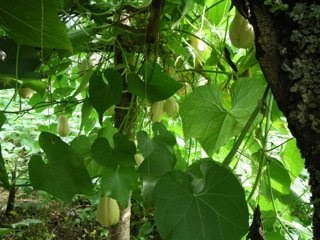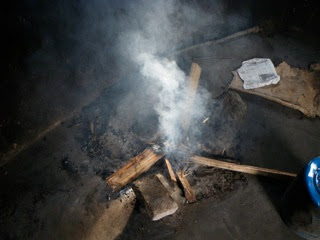 directs. We are never quite sure what to expect when we are invited to a new institution. Sometimes we are asked to talk about Canada or the Anglican Church in Canada, sometimes we spend time talking with staff and students, and other times we just get a tour and leave. When we got into the car to travel to Ishaka I was told that they wanted me to preach to an assembly of about 700 primary 4 to primary 7 students. I had been told by some of the professors at Wycliffe to have a couple of sermons ready for general use, so I thought I was ready for this experience. The unfortunate thing is they wanted me to preach on a specific passage and I had less than 15 minutes to prepare! Fortunately it was a passage that I was familiar with, but it was a nerve-racking experience none the less. I think it went relatively well although I find it difficult to work in sufficient repetition of my main points while concentrating on speaking with a Ugandan accent.
directs. We are never quite sure what to expect when we are invited to a new institution. Sometimes we are asked to talk about Canada or the Anglican Church in Canada, sometimes we spend time talking with staff and students, and other times we just get a tour and leave. When we got into the car to travel to Ishaka I was told that they wanted me to preach to an assembly of about 700 primary 4 to primary 7 students. I had been told by some of the professors at Wycliffe to have a couple of sermons ready for general use, so I thought I was ready for this experience. The unfortunate thing is they wanted me to preach on a specific passage and I had less than 15 minutes to prepare! Fortunately it was a passage that I was familiar with, but it was a nerve-racking experience none the less. I think it went relatively well although I find it difficult to work in sufficient repetition of my main points while concentrating on speaking with a Ugandan accent.One of the joys of being here is seeing so many children and youth involved in church activities. The students in Primary 4 to Primary 7 at Ishaka Primary School led most of the assembly themselves. They also greeted us with several choruses in English and Rulankole. The songs were wonderful. The children here have a very keen sense of rhythm and harmony. It also reminded me how important that music is in our Christian formation particularly for children. We learn a lot of our theology more from the music we sing than the words we hear preached because music not only touches the mind, but the heart. Perhaps we need to re-learn some of the children’s songs in our churches back home as an important part of teaching our Sunday School children. Thinking of all this makes me want to extend a special thanks to Sarah Cardwell back home at St. Paul’s Fort Erie, for instilling a love of music in me when I was young.
There are many reasons why the youth are so involved in the life of the church in Uganda. In part it is because the church leadership here has been actively reaching out to them. A few days before we arrived in the West Ankole Diocese, they held their 2nd annual youth convention with an estimated 6 000 youth from this diocese alone. I can’t imagine getting such a crowd back home from one diocese. These youth gathered for 3 days of preaching, music and fellowship. We are sorry that we missed the experience! The church leaders here are also are actively adapting their liturgy, song and even dance to keep children and youth involved. At the same time they keep a form and theology that is distinctly Anglican. It is a testament to how flexible Anglican liturgy can be if we let it.
I think the biggest reason the youth are so involved in the life of the church is the church’s involvement in the schools. The religious institutions (particularly Anglican, Catholic and Muslim) that founded many of the schools here have fought long and hard with the government to maintain the right to teach their faith values in the schools they have founded even if they are government aided. In the schools that the Anglican Church owns here, the head teacher needs to be a member of the church and religious education is mandatory for all students. The schools all seem to have regular assemblies and morning prayers, which are often led by the students themselves. Each school also has a chaplain on staff to provide spiritual direction to the staff and students.
I doubt that the relationship that the churches here have with their schools would translate to a Canadian context. With so many faith traditions back home such an exclusive relationship between a school and a church would be inappropriate and even discriminatory. However, I wonder if the churches back home could do more for school children. Could and should the churches relationship with local schools be different? Seeing so many things run by youth here makes me wonder if secondary school students back home could be encouraged to start their own fellowship groups in their schools. I am looking forward to visiting to some more schools here and seeing what we can learn from them that might work back home.























